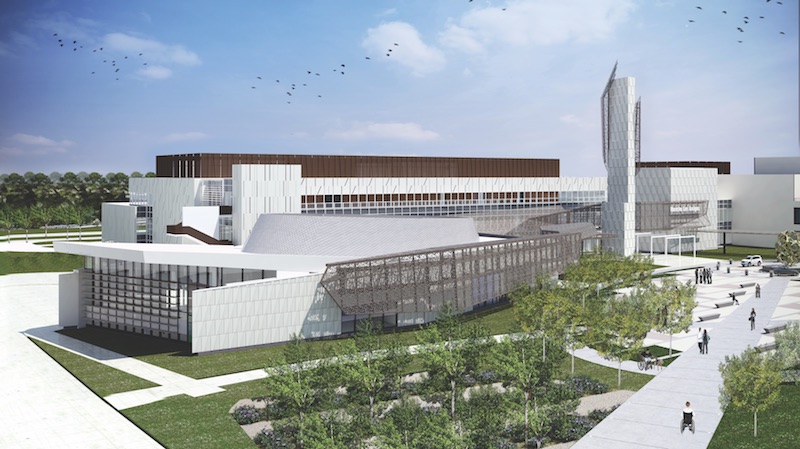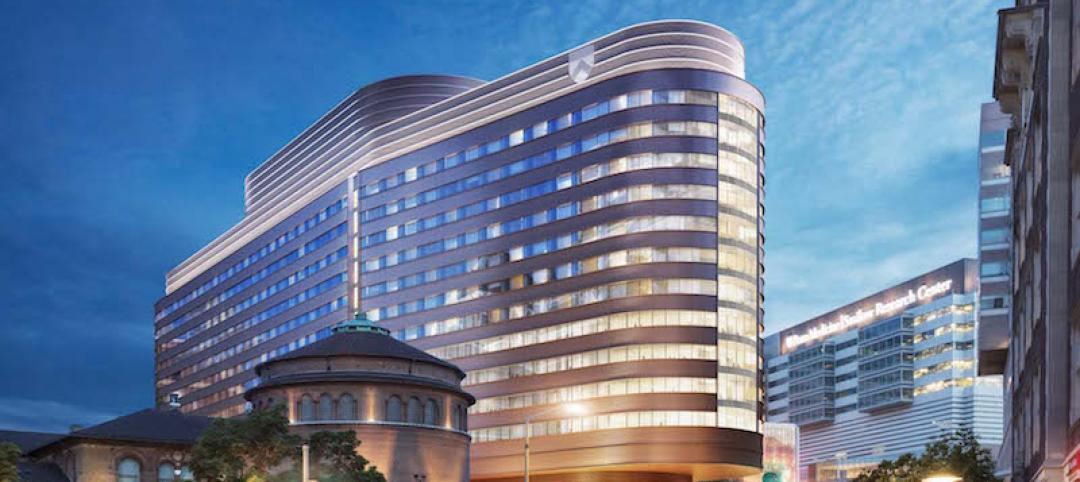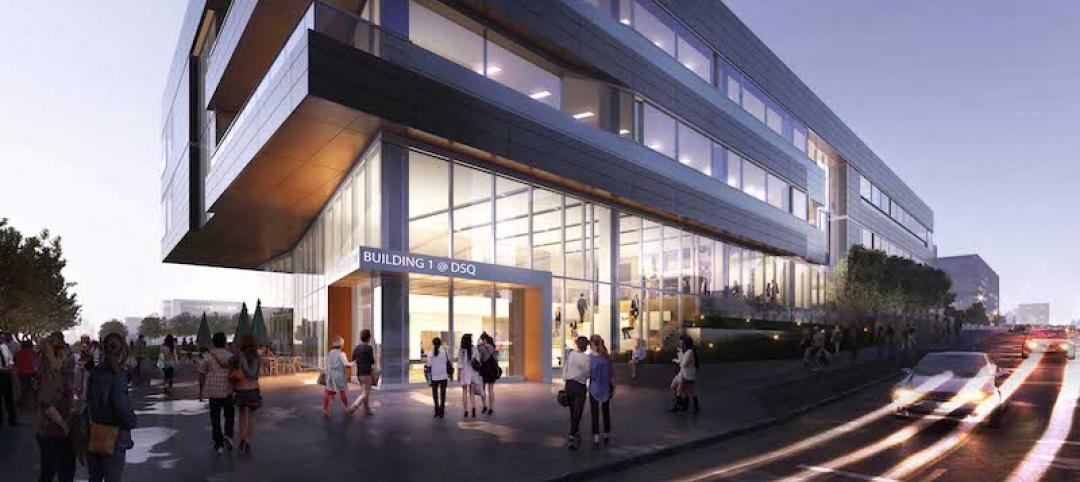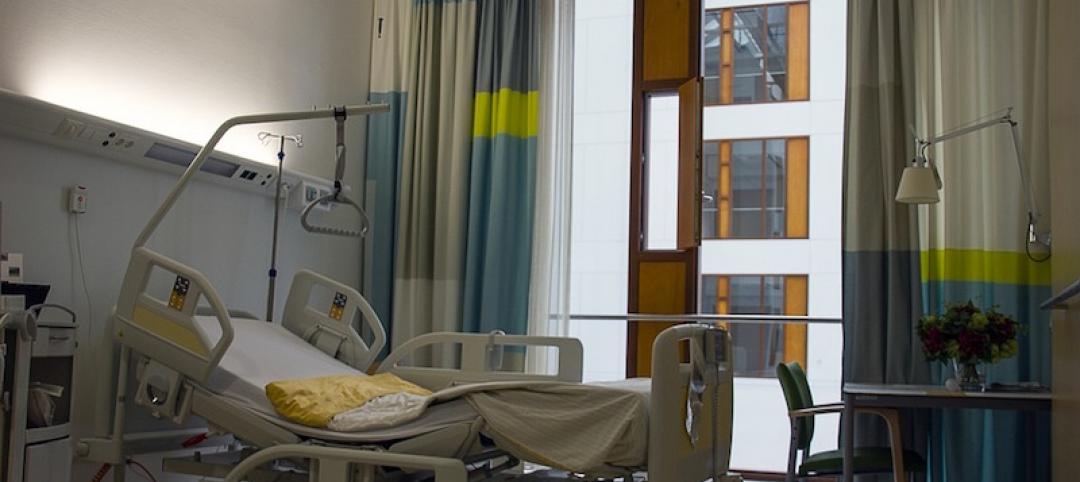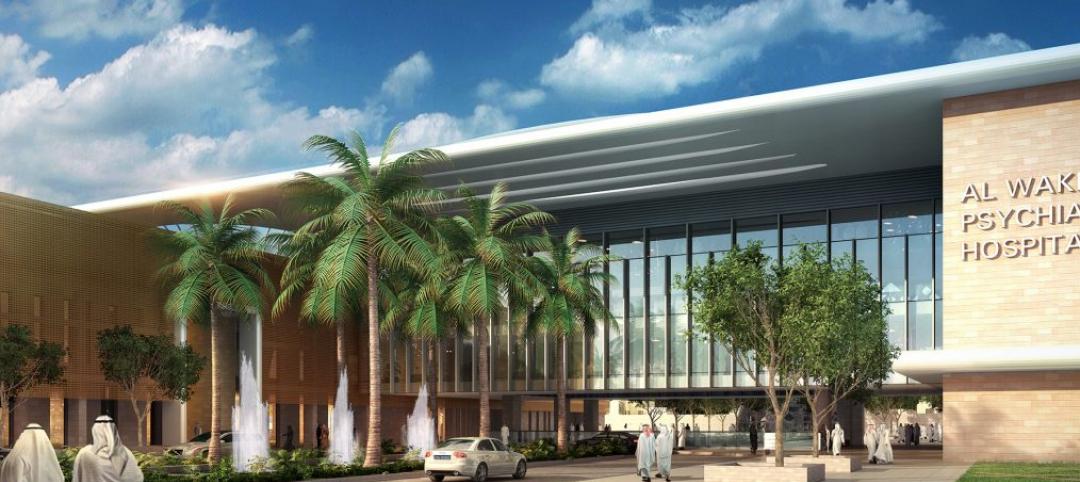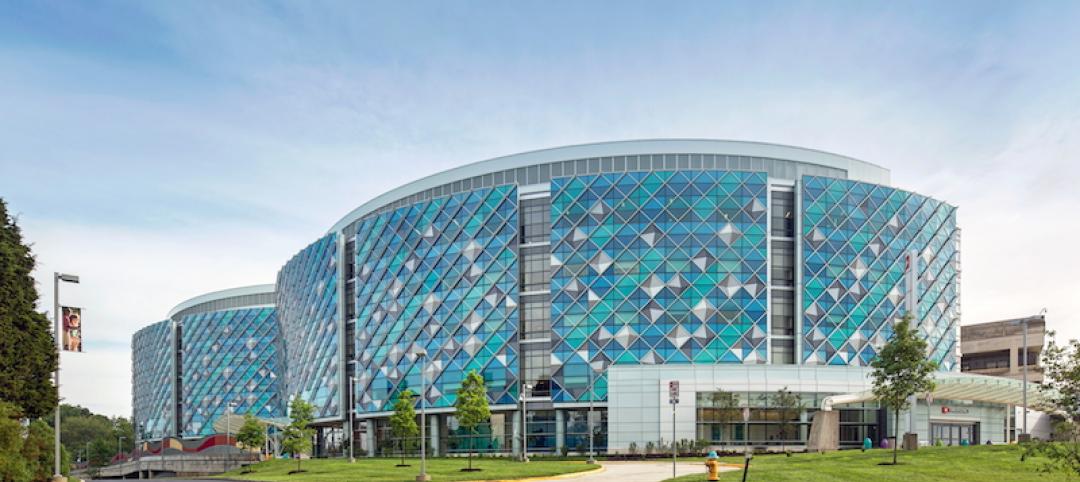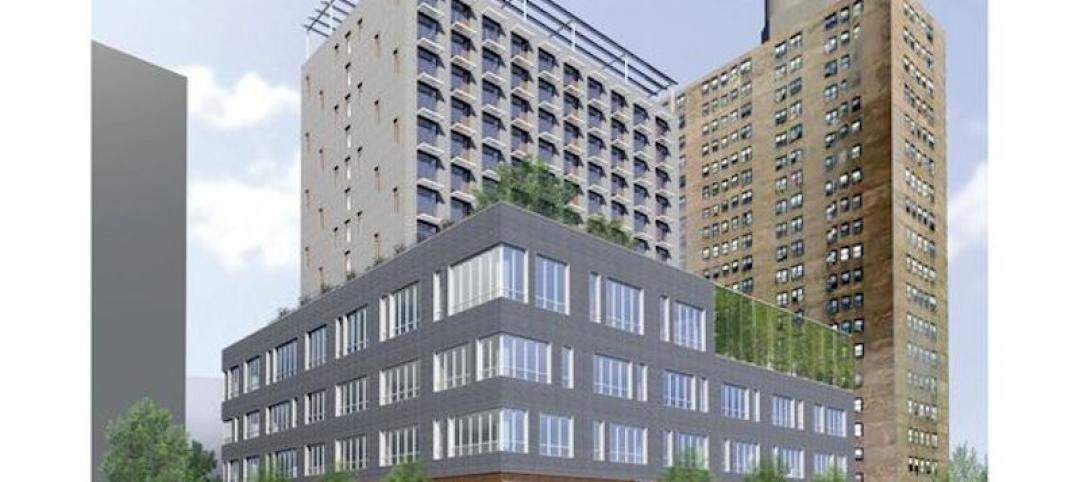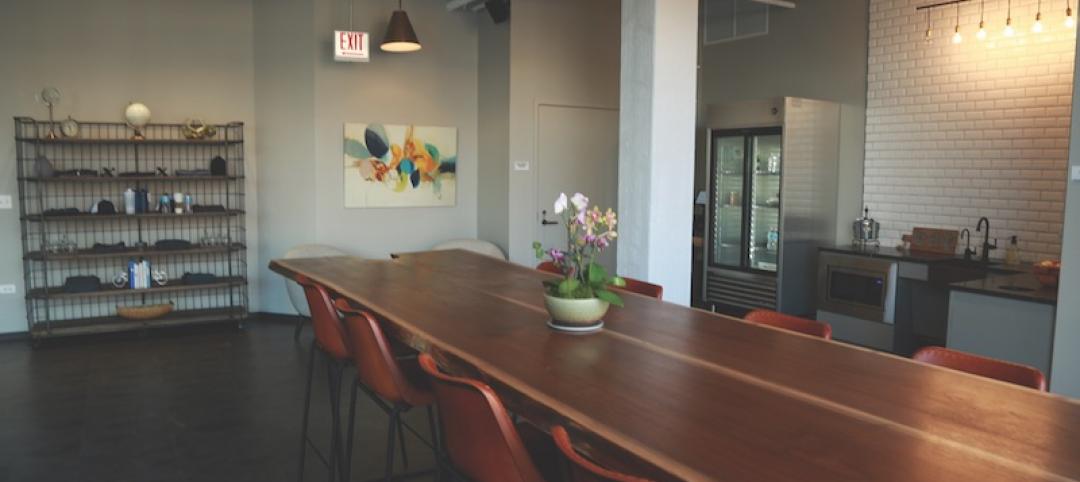The connection between the outdoors, health, and wellness has been gaining validity and acceptance within the design and medical communities. One of the fullest expressions of this nexus is occurring at Rancho Los Amigos National Rehabilitation Center, in Downey, Calif., the renowned recovery and rehab facility for patients with spinal cord and brain injuries, orthopedic disabilities, strokes, neurological disorders, and physical and developmental disorders.
The hospital’s ongoing $418 million revitalization and beautification, which is scheduled for completion in 2020, includes the renovation of its existing inpatient hospital, whose expansion will link it to a new outpatient building. A new wellness and aquatic therapy center already has opened, 15 months ahead of schedule.
But what makes this design-build project different will be the transformation of the facility’s entire campus into an outdoor recovery zone that encompasses a healing garden, therapy gardens, and terrain park.
Bonnie Khang-Keating, Principal and Vice President with SmithGroupJJR, the project’s lead designer, explains that the hospital—which is owned by Los Angeles County and has been in operation since 1888—has been serving the community from mostly older, modular buildings. By stacking those buildings vertically as part of the revitalization, and by adding a parking garage, SmithGroupJJR and Taylor Design, the project’s architect of record, gained considerable open space, which she estimates will account for 30–40% of the total campus.
Existing buildings and hardscape are being replaced with new dual-purpose outdoor spaces, healing gardens and terraces, and large plazas and amphitheaters that will also serve as physical therapy and terrain parks. “The hospital wants to hold events outside, like wheelchair basketball and Special Olympics,” says Khang-Keating.
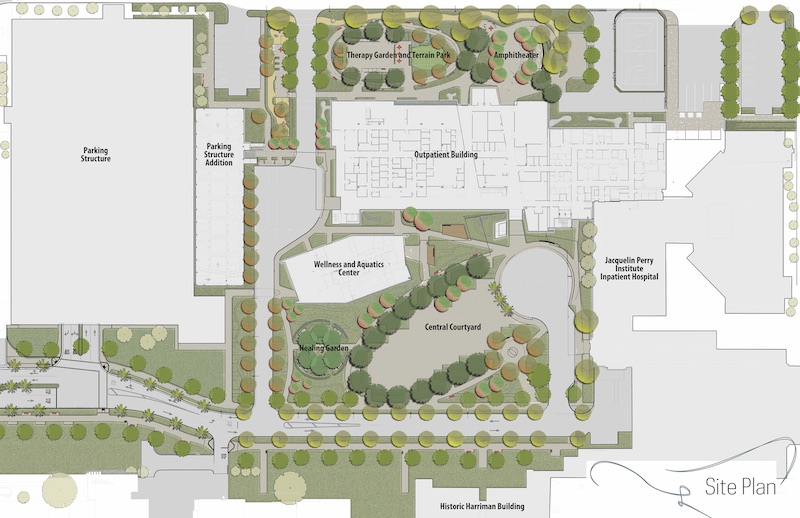 SmithGroupJJR and landscape architect KSA Design Studio's layout of the rehab center surrounds new and existing buildings with a variety of outdoor environments. Image: SmithGroupJJR.
SmithGroupJJR and landscape architect KSA Design Studio's layout of the rehab center surrounds new and existing buildings with a variety of outdoor environments. Image: SmithGroupJJR.
Taken together, the 29,170-sf therapy garden, the 8,400-sf horticultural garden, the 21,740-sf amphitheater, and the 8,790-sf sports court will account for 1.56 acres of open space on the hospital premises.
KSA Design Studio, the project’s landscape architect and a member of its design-build team, has focused on selecting the types of plants, ground cover, and other materials that would be used.
Khang-Keating notes that Rancho Los Amigos is unique among hospitals in that all of its outdoor-rehab activities are on the ground floor, which has the benefit of encouraging and expanding patients’ mobility. SmithGroupJJR programmed every foot of outdoor space with the expectation that it would be used every day, says Khang-Keating.
One of the goals of the design is to allow patients to learn to adapt to external conditions they will face once they’re discharged. Many former patients also return to the campus to mentor current patients.
Large sliding doors that line the entire wall of the outpatient therapy gyms further blur the boundary between indoor and outdoor space.
Because landscaping is usually the last thing that gets installed on a project, it can become an afterthought and get reduced or cut completely when budgets get tight.
But Khang-Keating says Rancho Los Amigos championed the indoor-outdoor concept right from the start. She says this is especially true of its CEO, Jorge Orozco, who started working at the hospital as a physical therapist in 1989.
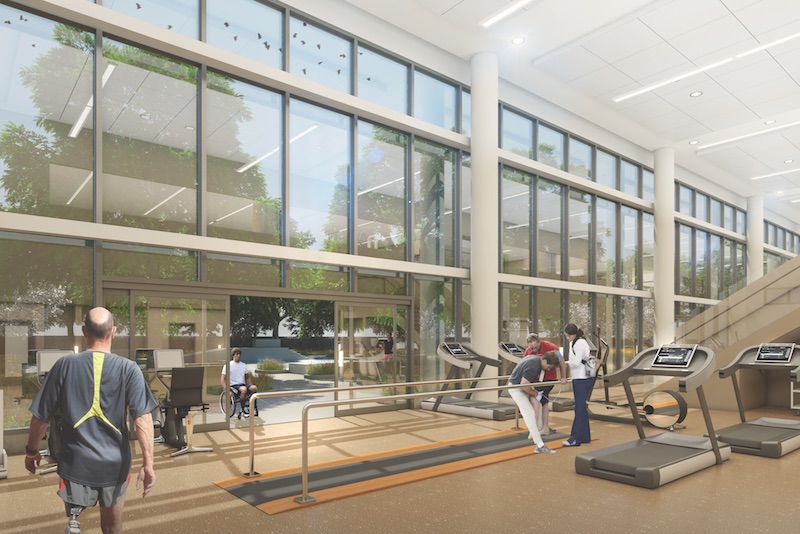 In the ground-floor gym (below), glass partitions blur the divide between indoors and outdoors. Image: SmithGroupJJR.
In the ground-floor gym (below), glass partitions blur the divide between indoors and outdoors. Image: SmithGroupJJR.
Related Stories
| May 30, 2017
Accelerate Live! talk: Health-generating buildings, Marcene Kinney, Angela Mazzi, GBBN Architects
Architects Marcene Kinney and Angela Mazzi share design hacks pinpointing specific aspects of the built environment that affect behavior, well-being, and performance.
| May 24, 2017
Accelerate Live! talk: Learning from Silicon Valley - Using SaaS to automate AEC, Sean Parham, Aditazz
Sean Parham shares how Aditazz is shaking up the traditional design and construction approaches by applying lessons from the tech world.
Healthcare Facilities | May 16, 2017
University of Pennsylvania’s new $1.5 billion hospital is being built with the future in mind
The Pavilion broke ground on May 3.
Healthcare Facilities | May 4, 2017
Mortenson provides details about its first building in Minnesota’s ambitious Destination Medical Center development
One district alone could add two million sf of commercial and residential space to Downtown Rochester.
Healthcare Facilities | May 1, 2017
Designing patient rooms for the entire family can improve patient satisfaction and outcomes
Hospital rooms are often not designed to accommodate extended stays for anyone other than the patient, which can have negative effects on patient outcome.
Healthcare Facilities | Apr 28, 2017
Can healthcare be retail?
Healthcare systems have much to learn from retail. While they have been laser-focused on delivering exceptional patient care on their primary campuses, they face an onslaught of new challenges as they embrace a retail strategy to expand outpatient services and their ambulatory network.
Healthcare Facilities | Apr 24, 2017
Treating the whole person: Designing modern mental health facilities
Mental health issues no longer carry the stigma that they once did. Awareness campaigns and new research have helped bring our understanding of the brain—and how to design for its heath—into the 21st century.
Sponsored | Glass and Glazing | Apr 14, 2017
Azuria glass from Vitro provides hospital with the desired pop of color
Located in Wilmington, Delaware, Nemours/duPont hospital has undergone a series of expansions since it was founded in the 1940s.
Healthcare Facilities | Apr 13, 2017
Investors and developers are still avid for medical office buildings
A new CBRE survey finds that equity set aside for purchases continues to outshoot the availability of in-demand supply.
Healthcare Facilities | Apr 13, 2017
The rise of human performance facilities
A new medical facility in Chicago focuses on sustaining its customers’ human performance.


